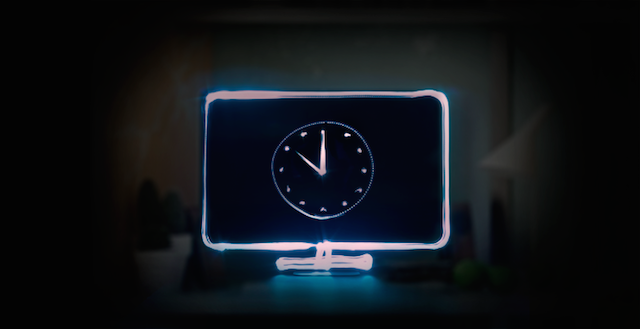By: Jess Myra, guest blogger
Dusty photo albums and boxes of letters are being replaced with hard drives and cloud storage. Instead of fading images and ink, we have the endurance of digital bytes and, however succeeding, our emotional needs remain grossly unsatisfied. As we transition to this new type of digital content management, traces of ourselves start to manifest that will retain life far after we die. Have we properly considered the future of our digital selves after we are physically gone? In this increasingly digital world, how can we have a legacy that will matter to future generations?

Figure 2: Survey results for how often people handle their traditional mementos, like photo albums, postcards, or letters.*
What about traditional mementos like photo albums and letters as a means of remembrance and legacy? Traditional mementos are often just meaningful to the person that owns them (see Figure 1) and they likely do not even remember the last time they handled them (see Figure 2). Comparatively, many people want to be remembered long after their death so the paradigm of coveting personal objects as a method to retain a legacy to pass on to others is not very effective. The meaning and value of traditional mementos can easily be lost to the next sequence of receivers. So much for a long lasting legacy…
Digital hoarding—better right? Wrong. We are amassing gigabytes of photos, videos, and emails and we struggle to parse meaningful content at relevant times from the collections. As it is now, we can navigate through a sea of digital photos and we will encounter moments of meaning, it might just take awhile to find what we are looking for. Web services like Flickr, or software applications like iPhoto add some clarity with organizational methods like date stamping or tagging. Facebook’s implementation of the Timeline also helps us to reflect on shared moments based on years of our lives. Yet, why is a date, keyword tag, or year relevant after we die? How does this meta data add value to our digital legacy when people want to access it later?
Further, the longevity of our digital content is mostly unconsidered and arbitrary after death. It will likely persist in multiple copies on servers spread across the globe, buried on a hard drive with many other forgotten—yet potentially valuable files—or deleted in the ritual of ‘spring cleaning’ our desktop annually. Can temporal aspects of our digital selves be more indicative of real life? Do we want to extend the value of our lives to others in our network when we die with a digital life, and ‘digital age’? For example, someone who died at the age of 85, ten years ago would be a digital age of ten.
The Archive
So what exactly is a digital archive after someone physically dies? It is easy to consider it as a collection of all digital content that the person owned. This would include the digital photos, video, audio, emails, tweets, and text messages from that one person. However, in reality the lines between digital archives are not so distinct. Very often, all of this digital media is shared with others. We are in photos together, we text and tweet with our friends. Our milestone moments and memories have value because we experience them with people. We are human and are innately social beings. Consider the shared mementos between a family, or tight network of friends. The digital archive of someone who has died in that context is viewed less as ‘theirs’ and more as ‘ours’ (see Figure 3).

Figure 3: Respondents expect multiple parties to own their digital content after death, including family, friends, and the general public.*
Naturally then, we must consider what ownership means in this context. When photo and videos are captured simultaneously by different people and then made available through multiple digital channels like Facebook and Instagram, it is easy to understand how people expect shared ownership of content within these modern uses. We accept a broader ownership of digital content as we tag our friends, and they tag us, and we each share the same content independently through different outlets.
With so many channels available to access and share digital content, and so much of our time now being dedicated in the digital realm, there is a larger audience available that is unparalleled by our traditional mementos. Because of this, there is greater opportunity to reflect our digital selves forward to be remembered by future generations and more importantly, to provide value for them via our digital archives for a longer period of time.
Everlasting Presence
As traces of our digital selves persist after we die, there is opportunity leverage digital media so our lives can continue to be meaningful for our loved ones. We can retain relationships with people we care about and make our life experiences available for their benefit. In essence, we can persist digitally to some degree after physical death.
One of the biggest challenges with digital immortality after death is retaining relevancy of our digital content over time. How can our lives be valuable and meaningful to future generations? How can someone close to us, or far from us emotionally, stay connected and nurture the relationship even though we are physically dead?
In human history, there has always been a desire to leave a legacy and be remembered. This happens at various scales whether as a civilization, culture, family, or individual—think pyramids to gravestones. With the transition into more ubiquitous lifestyles, our habits and basic human qualities remain. We still want to understand ourselves, where we came from, and be remembered. Only the channels of communications and access to information are accelerated and varied with the advent of technology.
Now we have the opportunity to leverage qualities of digital content to support these needs and relationships into the future. With the copious amounts of data being collected and shared about our personal lives, there is opportunity to stay connected in new ways after death. Algorithms based on personality and character traits can auto-post on someone’s behalf—as seen in the new online service LivesOn that will tweet for you beyond the grave. Similarly, services like Dead Social and ifidie allow users to send preplanned messages in social media after death.
Intersections of Life
However, not represented in the current suite of post-life digital services are the benefits of shared life experiences and commonalities across digital archives after death. Namely, points of intersections for digital mementos that are important. The moment of overlap between my life and a digital archive, whether very personal or not, can still be valuable in different contexts.
These corresponding life experiences can be available from the archive of those that have died to provide a new basis for empathy throughout our life phases that the deceased can contribute to. Either superficially out of interest, or more practically as shared life experiences, imagine being able to filter through relationships with those that are dead for shared moments. For example, from shared hobbies, and haircuts, to life milestones of the birth of a first child respectively. How exciting to discover new perspectives on people you thought you already knew, or new commonalities with a relative you never knew in life. Commonalities and shared experiences are timeless, retaining value in new ways to different people, for different reasons, at different moments.
Current platforms that exist have not been built for the functionality of post-life content management. Facebook’s Memorial pages are static archives in an active public platform that do not address the sensitivities of specific relationships. The Timeline organization of content is practical for our own self reflection in life, however, as a digital archive it does not provide direct value for others. For example, I could go to a year in the Timeline, and then proceed to navigate until I found a certain memory, but there is no awareness in this feature for the specific relationship that we shared.
Because we have various degrees of relationships with people, we often want to share and remember people in different ways based on how we knew them. Also, the type and amount of information we will want to share will depend on how close we are to them. Thus, using public platforms to serve the purpose of many degrees of relationships is not appropriate. It does not satisfy the specificity of personal relationships, and imposes moments in the public sphere that would likely not be expected and potentially not desired as well.
End or Beginning?
There are many considerations as we reflect on the future of our digital selves, including longevity, ownership, and value over time. Through my research, I believe current existing platforms do not leverage digital media adequately for post-life legacy in an active contextual way, nor does it support the needs of those close to us as a platform for communication and memory in our physical absence. I believe the lines between individual digital archives are blurred and there is opportunity for our life to retain relevancy far after we die by leveraging the value of intersections across our digital archives. Through shared memories and availability of empathetic experiences, our lives can have meaning over time via the rich digital content that aggregates throughout our lives. There is a new opportunity presented to us that did not exist before with traditional mementos. Fortunately, we are in control and will get to decide what it means to command our post-life digital selves—should we choose to.
*Results presented in the figures are based on interviews and an online survey of 115 respondents. Details of the survey summary and resondents are available on my thesis website: http://www.memorality.me/research-blog/2013/3/1/survey-summary
Jess Myra, a native to Canada, is currently an Interaction Design Master’s Candidate at the Umea Institute of Design in Sweden. This blog post is rooted in research and initial insights from her graduate thesis project, Memorality: The Future of Our Digital Selves.
More information on this topic and her thesis research can be found here: www.memorality.me






